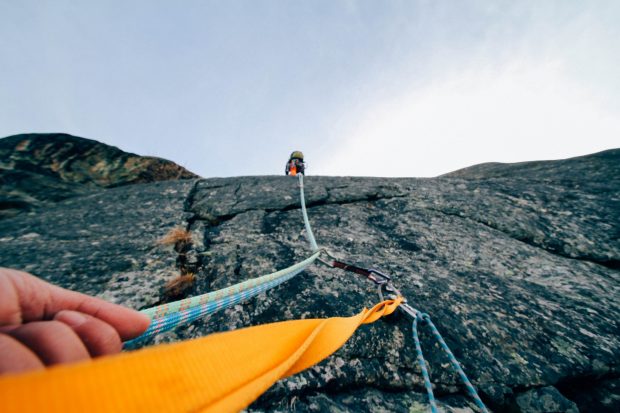Essential knots for rock climbing

If you’re interested in rock climbing, these are the knots you should know. When you’re climbing, you need to have these knots memorized so that you can identify which knot is most appropriate for the situation.
Figure 8
The figure 8 knot is the most common and useful knot in rock climbing. It’s most often used to tie the rope to your harness so that you can climb safely, but it’s also frequently used to create anchors. If there’s only one knot you need to know for rock climbing, it’s the figure 8.
Alpine Butterfly
The alpine butterfly may not be used in everyday rock climbing situations, but if you ever take your climbing to a mountaineering or alpine climbing setting, this knot will be very helpful. The unique characteristic of this knot is that it can be loaded from either side and no matter what loading orientation you use the knot remains strong. For this reason, the knot is often employed to connect members of glacier travel rope teams together.

Flat Overhand
The flat overhand is an extremely simple, yet incredibly useful knot. It’s often used to connect two ropes together for the purposes of rappelling. It excels in this situation because it’s relatively low profile reduces the chances of the knot getting stuck when you pull the rope down once you finish your rappel. Though rare, this knot can in some cases roll, so remember to leave nice long tails when tying this knot for added security.
Double Fisherman
The double fisherman knot is another knot used to tie two ropes together. It’s extremely strong and generally considered more secure than the flat overhand. However, it’s extremely difficult to untie after it’s been loaded. Climbers often use this knot to create Prusik loops, since they know the knot won’t need to come untied once the Prusik has been created.
Clove Hitch
The clove hitch is used extensively in multi-pitch trad and sports climbing, but it’s also a great knot to learn even if you’re just starting out. You can use the clove hitch to quickly attach a rope to a carabiner, and if that rope is tied to your harness, you can securely attach yourself to an anchor.

Munter Hitch
The munter hitch was once used for belaying and rappelling before ATCs and other belay and rappel devices were developed. Nowadays climbers have a wide variety of devices to use for these purposes, but what happens if a belay device gets dropped halfway into a multi-pitch climb? If you know how to tie the munter hitch, you’re in luck, as you can probably use it to get you and your partner to safety.
Girth Hitch
The girth hitch is as simple as merely passing a loop of rope through itself after wrapping it around an object, yet it comes in handy in a variety of different climbing scenarios. If you come across sturdy trees or chockstones on a climb, you might quickly girth hitch it and clip it for protection. Another use for the girth hitch is attaching a sling to your harness as a personal tether to secure yourself to anchors.
Prusik
The Prusik is a type of friction hitch that is used in a variety of rescue scenarios as well as a rappel backup. Due to the fact that this knot grips the rope until you loosen the wraps with your hand, it can be used very effectively as an ascender. Each member of a glacier travel team will often have two Prusiks ready to go in case a crevasse rescue situation arises.

Autoblock
The autoblock is another friction hitch, similar to the Prusik, but it is much faster and simpler to tie. This knot is most often used as a rappel backup so that if for some reason your brake hand leaves the rope on rappel, the autoblock will grab and stop your fall.
Bowline
The bowline is commonly referred to as the “rescue knot”. It can be used in a variety of situations, but most often it’s employed to securely loop rope around an object, or a person stuck in a potentially dangerous situation. In climbing, it can be used to anchor to a tree using only a rope for a single strand rappel.
If you have any comments, please drop us a message on our Outdoor Revival Facebook page.
If you have a good story to tell or blog, let us know about it on our FB page. We’re also happy for article or review submissions; we’d love to hear from you.
We live in a beautiful world, get out there and enjoy it.
Outdoor Revival – Reconnecting us all with the outdoors.
